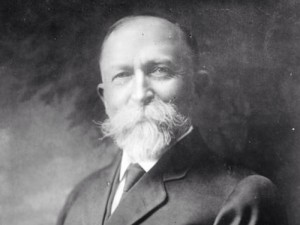Masturbation Deterrent?
 In the late 19th century circumcision became a popular medical procedure. Partly this came from observations that Jewish boys seemed to have better health than the average population, so doctors wondered whether circumcision was the reason. But more significantly, this was an era of religious sexual repression, with many people taking the view that masturbation was sinful and unhealthy. One well-known proponent of medical circumcision was Dr John Harvey Kellogg (of Kellogg’s Corn Flakes fame). An Adventist physician, Kellogg advocated the feeding of fiber-based foods to fight masturbation, which he professed to be “an abominable crime”. So cornflakes, are supposed to taste, well, tasteless, to avoid creating any arousal!
In the late 19th century circumcision became a popular medical procedure. Partly this came from observations that Jewish boys seemed to have better health than the average population, so doctors wondered whether circumcision was the reason. But more significantly, this was an era of religious sexual repression, with many people taking the view that masturbation was sinful and unhealthy. One well-known proponent of medical circumcision was Dr John Harvey Kellogg (of Kellogg’s Corn Flakes fame). An Adventist physician, Kellogg advocated the feeding of fiber-based foods to fight masturbation, which he professed to be “an abominable crime”. So cornflakes, are supposed to taste, well, tasteless, to avoid creating any arousal!
Religiously driven perceptions that the sexual pleasure of masturbation was not something to be tolerated, led to searching for ways to halt it. Kellogg was not alone in advocating that if a boy were circumcised it would prevent or decrease his urge to masturbate. In his case, he advocated the operation be performed without administering an anaesthetic, “as the brief pain attending the operation will have a salutary effect upon the mind, especially if it be connected with the idea of punishment…the soreness which continues for several weeks interrupts the practice (of masturbation)…”
Kellogg also applied his thinking to young girls, believing he was doing them good when using carbolic acid to burn away the most sensitive tissue on the clitoris. The horror of this is self-evident now, yet it is vital to appreciate that exactly the same thinking behind this and medical clitoridectomies (which were considered valid medical procedures in the US until the 1950s) lies behind the rise of medical circumcision.
Victorian era doctors knew very well that circumcision denudes, desensitizes, and disables the penis. This way of thinking then became accepted as a panacea for many conditions and they were soon claiming that circumcision was a cure for a panoply of ailments and conditions such as: epilepsy, convulsions, paralysis, elephantiasis, tuberculosis, eczema, bed-wetting, hip-joint disease, faecal incontinence, rectal prolapse, wet dreams, hernia, headaches, nervousness, hysteria, poor eyesight, idiocy, mental retardation, and insanity. It’s no wonder then that there’s still so much antagonism and hostility in regards to the foreskin because of all that it has been blamed for and its labelling as ‘worthless’.
Of course, masturbation didn’t actually cease just because males had been circumcised. Indeed a much more recent survey conducted on male masturbation found that circumcised men masturbated more frequently than uncircumcised men. But this logical flaw made no difference, the obsession with circumcision had shifted from masturbation deterrent to that of health promoting. The practice seemed to become accepted by all strata of society, gathering momentum to reach almost universal acceptance in the major English speaking countries throughout the mid 20th century, excluding Britain where the fad originated but had already largely died out. In the 1940’s through to the 1960’s circumcision reached universal levels with up to 90% of males being circumcised in the U.S, Canada, Australia and New Zealand. At one stage hospitals routinely circumcised all baby boys , without any parental consent whatsoever, as if it was their right and duty to do so. Thankfully the sexual revolution of the 1960’s began people questioning more deeply and the practice was challenged and slowly began to decrease. Initially New Zealand reduced its circumcision rate, followed by Australia with Canada only recently beginning its journey to eradicate circumcision. However the U.S remains largely entrenched in the dogma of medical circumcision, with both men and women often oblivious to the foreskin and the issues involved, and continuing to circumcise neonates with little consideration for its long-term effects.
